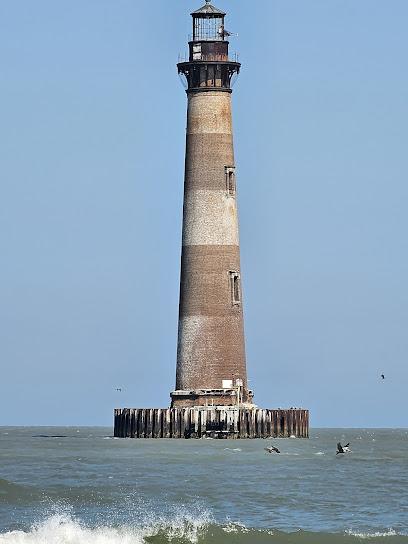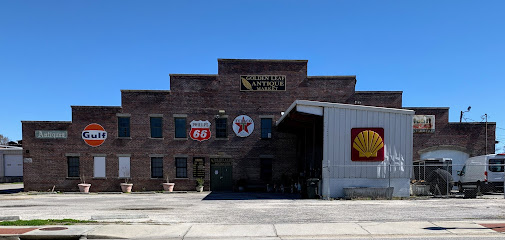
Exploring the Wonders of Francis Marion National Forest
Discover the enchanting landscapes and rich history of Francis Marion National Forest, a paradise for nature lovers and adventure seekers in South Carolina.
Nestled in the heart of South Carolina, Francis Marion National Forest offers an idyllic escape into nature's embrace. Spanning over 259,000 acres, this vast forest is a haven for outdoor enthusiasts, nature lovers, and curious explorers alike. From dense pine woodlands to serene swamps, the forest's diverse landscapes provide a perfect backdrop for a myriad of activities. Hiking trails meander through the forest, offering visitors a chance to experience its rich biodiversity up close. The Palmetto Trail, one of the most popular paths, allows trekkers to traverse lush greenery and spot native wildlife such as deer, turkeys, and an array of bird species. For those who prefer water-based adventures, the forest's rivers and creeks are perfect for kayaking and canoeing, providing a refreshing way to explore the area. History buffs will find delight in the forest's storied past. Named after the Revolutionary War hero, General Francis Marion, also known as the “Swamp Fox,” the forest is steeped in history. Visitors can uncover remnants of the past, including old cemeteries and historic sites, which whisper tales of days gone by. Moreover, the forest is home to the Sewee Visitor and Environmental Education Center, where one can learn about the region's ecology and cultural heritage through engaging exhibits and programs. Whether you are seeking a peaceful retreat or an adventure-filled getaway, Francis Marion National Forest caters to all. Its scenic beauty, coupled with a wealth of recreational opportunities, makes it a must-visit destination for anyone traveling to South Carolina.
Local tips in Francis Marion National Forest
- Visit the Sewee Visitor and Environmental Education Center to learn about the forest's ecology and history.
- Wear waterproof footwear if you plan to explore the swamp areas.
- Bring insect repellent, especially during the warmer months.
- Check weather conditions before planning your trip as some trails might be affected by heavy rains.
- Consider visiting during the fall for cooler temperatures and vibrant foliage.
- Pack plenty of water and snacks, as amenities within the forest are limited.
Exploring the Wonders of Francis Marion National Forest
Nestled in the heart of South Carolina, Francis Marion National Forest offers an idyllic escape into nature's embrace. Spanning over 259,000 acres, this vast forest is a haven for outdoor enthusiasts, nature lovers, and curious explorers alike. From dense pine woodlands to serene swamps, the forest's diverse landscapes provide a perfect backdrop for a myriad of activities. Hiking trails meander through the forest, offering visitors a chance to experience its rich biodiversity up close. The Palmetto Trail, one of the most popular paths, allows trekkers to traverse lush greenery and spot native wildlife such as deer, turkeys, and an array of bird species. For those who prefer water-based adventures, the forest's rivers and creeks are perfect for kayaking and canoeing, providing a refreshing way to explore the area. History buffs will find delight in the forest's storied past. Named after the Revolutionary War hero, General Francis Marion, also known as the “Swamp Fox,” the forest is steeped in history. Visitors can uncover remnants of the past, including old cemeteries and historic sites, which whisper tales of days gone by. Moreover, the forest is home to the Sewee Visitor and Environmental Education Center, where one can learn about the region's ecology and cultural heritage through engaging exhibits and programs. Whether you are seeking a peaceful retreat or an adventure-filled getaway, Francis Marion National Forest caters to all. Its scenic beauty, coupled with a wealth of recreational opportunities, makes it a must-visit destination for anyone traveling to South Carolina.
When is the best time to go to Francis Marion National Forest?
Iconic landmarks you can’t miss
US Forest Service, Sumter National Forest, Enoree Ranger District
Discover the breathtaking landscapes and diverse wildlife of the Enoree Ranger District in Sumter National Forest, a must-visit destination for nature lovers.

Francis Marion & Sumter National Forests
Explore the vast wilderness of Francis Marion & Sumter National Forests, a nature lover's paradise with diverse trails, wildlife, and serene camping spots.

Unmissable attractions to see
Charleston City Market
Explore the historic Charleston City Market, a vibrant hub of local crafts and delicious Southern cuisine in the heart of Charleston, SC.

Bulldog Tours
Discover Charleston's rich history and culinary delights with Bulldog Tours - your gateway to exploring the city’s vibrant past.

Fort Sumter National Monument
Discover the rich history of Fort Sumter National Monument in Charleston Harbor, where the Civil War began amidst stunning views and captivating stories.

Joe Riley Waterfront Park
Discover the tranquil beauty of Joe Riley Waterfront Park, a perfect blend of nature, history, and local culture in Charleston, SC.

Charleston Outdoor Adventures
Discover the beauty of Charleston's waters through thrilling boat tours, serene kayak rentals, and unforgettable wildlife experiences at Charleston Outdoor Adventures.

Angel Oak Tree
Discover the Angel Oak Tree, a majestic 400-year-old Southern live oak on Johns Island, and immerse yourself in a natural historic wonder.

South Carolina Aquarium
Discover the marine beauty of South Carolina at the South Carolina Aquarium, a top tourist attraction in Charleston showcasing local aquatic life.

Charleston Harbor Tours
Discover the beauty and history of Charleston Harbor with scenic boat tours, perfect for tourists seeking adventure and relaxation in South Carolina.

Charleston Visitor Center
Explore the heart of Charleston at the Visitor Center, where unforgettable adventures and rich history await every traveler.

Marion Square
Discover the charm of Charleston at Marion Square, a historic park offering lush greenery, vibrant events, and a glimpse into the city's rich heritage.

McLeod Plantation Historic Site
Explore the McLeod Plantation Historic Site in Charleston, SC, and immerse yourself in the rich history and culture of the Gullah people.

Sandlapper Water Tours
Experience the stunning waterways of Charleston with Sandlapper Water Tours, where adventure meets the beauty of South Carolina's coast.

Palmetto Islands County Park
Discover the beauty of Palmetto Islands County Park, where nature meets adventure in the heart of Mt. Pleasant, South Carolina.

Fort Sumter Visitor Education Center
Explore the beginnings of the American Civil War at Fort Sumter Visitor Education Center, featuring engaging exhibits and stunning harbor views.

Colonial Dorchester State Historic Site
Experience the historical significance and natural beauty of Colonial Dorchester State Historic Site, a remarkable state park in South Carolina.

Essential places to dine
Waffle House
Experience the warmth of Southern hospitality at Waffle House in Yemassee – your go-to spot for classic American breakfasts any time of day.

The Swamp Fox Restaurant
Discover The Swamp Fox Restaurant in Charleston - where Southern charm meets modern American cuisine in an elegant setting.

Markets, malls and hidden boutiques
Books-A-Million
Explore a literary wonderland at Books-A-Million in North Charleston, where books, collectibles, and gifts come together for an unforgettable experience.

Old Whaling Company
Discover handcrafted beauty and unique gifts at the Old Whaling Company in Charleston, a treasure trove of quality and local charm.

The OOPS! Co.
Discover unique clothing and gifts at The OOPS! Co. in Mt. Pleasant, the perfect shopping destination for all ages and styles.

Golden Leaf Antique Market
Uncover hidden gems and vintage treasures at Golden Leaf Antique Market, a charming antique store in Mullins, South Carolina.

My Sister's Cottage
Shop local at My Sister's Cottage in Charleston for unique fashion accessories, gifts, and home goods that embody Southern charm.

Clm Resale Store
Discover unique treasures at Clm Resale Store in Moncks Corner, SC – your go-to discount store for eclectic finds and unbeatable prices.

Eclectic Finds, Antiques and Interiors
Explore a treasure trove of antique furniture and unique home goods at Eclectic Finds in Mt. Pleasant, SC – a must-visit for treasure hunters and decor enthusiasts.

Marion Emporium
Explore the Marion Emporium for an unforgettable journey through time with antiques, collectibles, and unique treasures in Marion, SC.

Jolie Luxury Consignment Boutique
Explore Jolie Luxury Consignment Boutique in Mt. Pleasant, SC, for designer fashion and accessories at unbeatable prices, blending luxury with sustainability.

The Tiny Tassel
Discover The Tiny Tassel in Charleston, a vibrant jewelry and gift shop where charming Southern style meets unique creativity.

Simple to Sublime
Explore the enchanting Simple to Sublime gift shop in Summerville, SC, where unique finds and artisanal treasures await every visitor.

Out of Hand
Discover unique women's clothing, beautiful floral arrangements, and thoughtful gifts at Out of Hand in Mt Pleasant, SC.

Best Gift Idea Ever
Discover unique gifts and local art at Best Gift Idea Ever, a charming gift shop in Charleston's historic French Quarter.

Lowcountry Whimsy
Explore unique gifts, metaphysical supplies, and serene meditation services at Lowcountry Whimsy in Mt. Pleasant, SC.

II Brunettes
Discover fashion and local artistry at II Brunettes Boutique in Mt Pleasant, SC, where unique styles await every savvy shopper.

Local Phrases about Francis Marion National Forest
-
- HelloHowdy
[haw-dee] - GoodbyeSee ya
[see yah] - YesYup
[yuhp] - NoNah
[nah] - Please/You're welcomePlease/No problem
[pleez/no prob-lem] - Thank youThanks
[thanks] - Excuse me/SorryS'cuse me
[skews me] - How are you?How y'all doin'?
[hao y'all doo-in] - Fine. And you?Fine. 'n you?
[fain. n yoo] - Do you speak English?Ya speak English?
[yah speak ing-lish] - I don't understandI ain't catchin' on
[I aint katch-in on]
- HelloHowdy
-
- I'd like to see the menu, pleaseCan I check out the menu?
[kan ai chek out the men-yoo] - I don't eat meatI don't eat no meat
[I don't eat no meat] - Cheers!Cheers!
[cheers] - I would like to pay, pleaseI'll settle up, thanks
[I'll set-l up, thanks]
- I'd like to see the menu, pleaseCan I check out the menu?
-
- Help!Help!
[help] - Go away!Git goin'!
[Git goin'] - Call the Police!Ring up the Sheriff!
[Ring up the Sheriff] - Call a doctor!Get the doc on the line!
[Get the doc on the line] - I'm lostI'm turned around
[I'm turned around] - I'm illI'm feelin' poorly
[I'm feelin' poorly]
- Help!Help!
-
- I'd like to buy...I reckon I'll buy...
[I reckon I'll buy...] - I'm just lookingI'm just browsin'
[I'm just browsin'] - How much is it?What's the price on that?
[whats the price on that] - That's too expensiveThat's mighty pricey
[That's mighty pricey] - Can you lower the price?Can ya do a deal on that?
[Can ya do a deal on that]
- I'd like to buy...I reckon I'll buy...
-
- What time is it?What's the time?
[whats the time] - It's one o'clockIt's one
[It's one] - Half past (10)Ten-thirty
[Ten-thirty] - MorningMornin'
[Mornin'] - AfternoonAfternoon
[Afternoon] - EveningEvenin'
[Evenin'] - YesterdayYest'day
[Yest'day] - TodayToday
[Today] - TomorrowTomorrer
[Tomorrer] - 1One
[One] - 2Two
[Two] - 3Three
[Three] - 4Four
[Four] - 5Five
[Five] - 6Six
[Six] - 7Seven
[Seven] - 8Eight
[Eight] - 9Nine
[Nine] - 10Ten
[Ten]
- What time is it?What's the time?
-
- Where's a/the...?Where's the...?
[Where's the] - What's the address?What's the location?
[What's the location] - Can you show me (on the map)?Can you point it out?
[Can you point it out] - When's the next (bus)?When's the next one?
[When's the next one] - A ticket (to ....)A pass (to ....)
[A pass (to ....)]
- Where's a/the...?Where's the...?
History of Francis Marion National Forest
-
Francis Marion National Forest is named after General Francis Marion, a revolutionary war hero known as the 'Swamp Fox.' Marion's guerrilla warfare tactics against British forces were legendary. The forest's dense woodlands and swampy terrain provided the perfect cover for his small, mobile units to launch surprise attacks, earning him his nickname. Throughout the war, Marion and his men used the forest as a base for their operations, significantly impacting the British campaign in the South.
-
Before European colonization, the land that now comprises Francis Marion National Forest was inhabited by the Santee tribe, a Native American people. The Santee lived along the banks of the Santee River and were part of the larger Catawba Indian Nation. They practiced agriculture, hunting, and fishing, and their legacy is still evident in the area through various archaeological sites and cultural artifacts.
-
Francis Marion National Forest was officially established on July 10, 1936. The creation of the forest was part of a broader effort during the Great Depression to provide jobs and restore the nation's depleted natural resources. The Civilian Conservation Corps (CCC) played a crucial role in the development of the forest, building infrastructure such as roads, trails, and fire towers, and planting trees to reforest the area.
-
The CCC was instrumental in shaping Francis Marion National Forest. During the 1930s and early 1940s, thousands of young men were employed in the forest, constructing trails, campgrounds, and other facilities. Their work not only helped to develop the forest for public use but also contributed to the conservation of its natural resources. Many of the structures and facilities built by the CCC are still in use today.
-
In the 1940s, the Santee Cooper Project, a major hydroelectric initiative, transformed the landscape of Francis Marion National Forest. The project involved damming the Santee and Cooper Rivers to create lakes Marion and Moultrie, which are now popular recreational areas within the forest. This massive engineering project provided much-needed electricity to the region and was a significant step in the rural electrification of South Carolina.
-
In September 1989, Hurricane Hugo, one of the most powerful hurricanes to ever hit the United States, caused extensive damage to Francis Marion National Forest. The storm's high winds and heavy rains toppled trees, destroyed habitats, and drastically altered the landscape. The forest's recovery from Hugo has been a long process, involving reforestation efforts and habitat restoration projects to bring the area back to its former glory.
Francis Marion National Forest Essentials
-
Francis Marion National Forest is located in South Carolina, USA, approximately 30 miles north of Charleston. The nearest major airport is Charleston International Airport (CHS), which is well-connected with domestic and international flights. From the airport, you can rent a car or take a taxi to reach the forest. The forest is accessible via U.S. Highway 17 and State Highway 41. There are also several entrances to the forest, so be sure to plan your route accordingly.
-
The best way to explore Francis Marion National Forest is by car, as public transportation options are limited. Car rentals are available at Charleston International Airport and in the city of Charleston. Within the forest, a network of well-maintained roads and trails allows for easy navigation. Biking and hiking are also popular ways to explore the forest, with numerous trails catering to different levels of difficulty.
-
The official currency is the United States Dollar (USD). Most establishments in the surrounding areas accept credit and debit cards, but it is advisable to carry some cash, especially if you plan to purchase items at smaller stores or local markets. ATMs are available in nearby towns such as Charleston and Moncks Corner.
-
Francis Marion National Forest is generally a safe destination for tourists. However, it is essential to take standard precautions such as not leaving valuables in your car and staying on marked trails. Be aware of local wildlife, including snakes and alligators, and follow safety guidelines. While there are no specific high-crime areas targeting tourists, it is always best to stay vigilant and aware of your surroundings.
-
In case of emergency, dial 911 for immediate assistance. Make sure to have a map and a means of communication, as cell service can be spotty in some areas of the forest. The nearest medical facilities are available in Charleston and Moncks Corner. It is also advisable to carry a basic first aid kit and any necessary medications.
-
Fashion: Do wear comfortable, weather-appropriate clothing and sturdy shoes suitable for hiking. Don't wear flip-flops or sandals when hiking. Religion: There are no specific religious customs to observe, but always be respectful of nature. Public Transport: Public transport is limited, so do rent a car for convenience. Greetings: Do greet people with a friendly 'hello' or 'hi'. Eating & Drinking: Do try local Southern cuisine in nearby towns. Don't litter in the forest; always carry out what you carry in.
-
To experience Francis Marion National Forest like a local, visit during the off-peak seasons (spring and fall) for fewer crowds and pleasant weather. Engage with local rangers and volunteers who can provide valuable insights and recommendations. Don't miss the opportunity to explore the diverse ecosystems, including swamps, marshes, and longleaf pine forests. Kayaking and canoeing in the forest's waterways offer unique perspectives and wildlife viewing opportunities.
Nearby Cities to Francis Marion National Forest
-
Things To Do in Mount Pleasant
-
Things To Do in Summerville
-
Things To Do in Myrtle Beach
-
Things To Do in Beaufort
-
Things To Do in Hilton Head Island
-
Things To Do in Aiken
-
Things To Do in Fayetteville
-
Things To Do in Rock Hill
-
Things To Do in Fort Mill
-
Things To Do in Charlotte
-
Things To Do in Spartanburg
-
Things To Do in Mooresville
-
Things To Do in Mauldin
-
Things To Do in Greer
-
Things To Do in Anderson





